Seccion: Entrevistas (Lecturas: 5)
Fecha de publicación: Octubre de 2018
Entrevista a Jean-Claude Michel, el amigo francés de Forrest Ackerman
Conozcan a quien fuera corresponsal europeo de Forrest Ackerman para la mítica "Famous Monsters of Filmland" y nos contará algo de cómo era el fandom en el siglo XX. Darío Lavia


English version
—¿Cuál fue tu primer contacto con el cine de horror clásico? ¿Cómo comenzó tu romance con el género?
—Sucedió en 1952, cuando tenía 12 años. Como puedes
imaginar, era una época diferente. En ese tiempo, en
Francia solo había un canal de televisión, por supuesto,
en blanco y negro y las únicas películas que proyectaban
eran usualmente westerns. de todas maneras, no teníamos
televisor en la familia, así que mi único conocimiento
de las películas era por ir al cine. Una noche, en
el barrio Latino de París, me atrajo la atención un poster
gigante que anunciaba Deux nigauds contre
Frankenstein... como podrás imaginar, se trataba de la
película de Charles T. Barton, Bud Abbott Lou Costello
Meet Frankenstein. Nunca había oído nombrar a Abbott
y Costello, o a Frankenstein. Pero supe que esa película
era para mi... no me preguntes por qué... Tal vez porque
mi abuela materna a veces me contaba leyendas célticas
cuando la íbamos a visitar a Bretaña... pero había un
problema, tan increíble como sonaría hoy en día: en
Francia, A&C Meet Frankenstein estaba prohibida para
menores de 16... ¡y aún me faltaban cuatro años para
cumplirlos! Ahora no recuerdo qué amigo de mi madre
fue que me acompañó esa noche y convenció al acomodador para que me permita ingresar
al cine. Y cuando vi la primera transformación de Lawrence Talbot en el hombre Lobo, tal vez a los cinco minutos de concluir los créditos iniciales, ¡me sentí aterrorizado pero, a la vez,
extasiado! De hecho, me impresionó tanto la película y, en particular, el monstruo de
Frankenstein (Glenn strange), que no pude dormir tranquilamente durante varias noches, a
pesar de la compañía de un formidable perro en nuestro departamento...
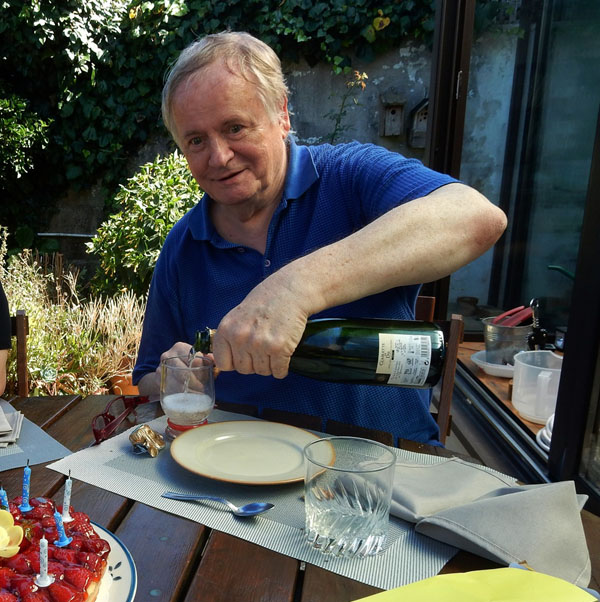
Luego comencé a buscar información acerca de Frankenstein, la novela y las películas. Era
bastante dificultoso, ya que las revistas francesas rara vez mencionaban o trataban de estos
filmes en la década del cincuenta. Por casualidad, unos meses después, en otro cine de Pigallé,
daban The Ghost of Frankenstein y logré persuadir a mi madre para que me acompañara a
verlo! Fue mi primera película "seria" del género, y comencé a tomar nota de los nombres de
los actores, directores...
Durante la Ocupación, desde luego, todas las películas norteamericanas estaban prohibidas
en Francia y, para darte un ejemplo, títulos como Gone With the Wind (Lo que el viento se
llevó-1939), se estrenaron recién luego de la Guerra. Ese fue el caso
de Frankenstein Meets the Wolf Man (Frankenstein contra el
hombre lobo-1943), que llegó a París en 1956. En esa época yo ya
estaba atento para cualquier película de esta clase que se
proyectara en París, y me convertí en habitué de la llorada "Midi
Minuit", en la que vi docenas de películas de horror y fantasía a lo
largo de dos décadas.
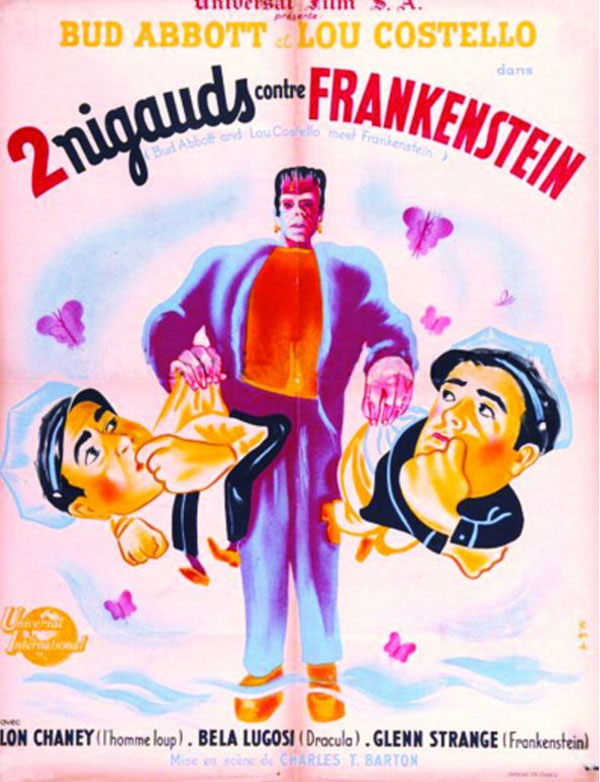
Nunca había oído nombrar a Abbott
y Costello, o a Frankenstein.
Pero supe que esa película
era para mi... no me preguntes por qué...
—Cuenta a nuestros lectores acerca de tus publicaciones, libros o
revistas...
—Como los críticos ignoraban o se burlaban de la mayoría de estas
películas (en general, los mismos críticos que, 15 años después, las
consideraron obras maestras), en 1957 escribí mi primer artículo,
titulado "La dynastie des Frankenstein" y lo envié a una revista
profesional llamada Satellite - Les Cahiers de la Science-Fiction. Fue
aceptado y publicado y si bien no me pagaron, al menos fue un
primer paso. Por aquella época vi un montón de películas, desde
las silentes (que usualmente daban en la Cinémathèque pero, a
veces, también en cines “comunes”) a las por entonces flamantes
películas góticas de Hammer, tales como The Curse of Frankenstein,
Horror of Dracula, etc.
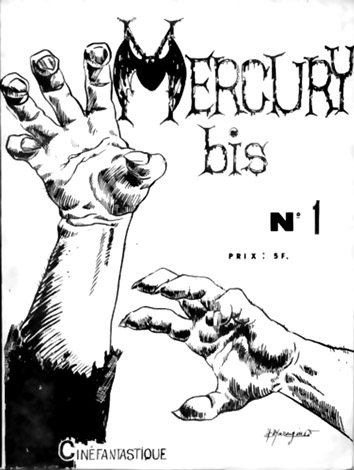 En 1961 un amigo británico me envió un número de Famous
Monsters of Filmand. Excitado, me animé a publicar un aviso
clasificado en una revista francesa llamada Fiction, preguntando
quien tendría los demás números. Increíblemente, fue Forrest J
Ackerman quien vio ese aviso y me envió por correo los números
anteriores así como un montón de stills y lobby cards. Ese fue el
comienzo de una nutrida correspondencia
y me convertí en el primer corresponsal
extranjero así acreditado en la revista... En 1961 un amigo británico me envió un número de Famous
Monsters of Filmand. Excitado, me animé a publicar un aviso
clasificado en una revista francesa llamada Fiction, preguntando
quien tendría los demás números. Increíblemente, fue Forrest J
Ackerman quien vio ese aviso y me envió por correo los números
anteriores así como un montón de stills y lobby cards. Ese fue el
comienzo de una nutrida correspondencia
y me convertí en el primer corresponsal
extranjero así acreditado en la revista...
Al año siguiente, conocí a Jean Boullet,
que era pintor, escritor y crítico de cine, y
a Philippe Druillet, un joven de 20 años
que más tarde se convertiría en un
famoso ilustrador y pintor. Pasamos dos
meses en Londres y vimos montones de
películas antiguas de horrror y fantasía
que nunca se habían dado en Francia (o se habían dado muchos años
atrás y nunca se volvieron a
proyectar). En ese entonces
se me ocurrió la idea de
hacer un fanzine (ya que
afrontar una revista era
impensable debido a los
costos). Pero eso solo ocurrió unos años
después, en 1965. Junto a un amigo llamado Jean-Pierre
Bouyxou (que devino en escritor, periodista, actor y
director que apareció en filmes de Jesús Franco y Jean
Rollin) hicimos una publicación llamada Mercury-Bis cuyo
primer número dedicamos por entero a Boris Karloff. En
1966 recibí una carta de alguien llamado Alain Schlockoff, que se ofreció para continuar el
fanzine, ya que Jean-pierre no pudo colaborar más, así publicamos el segundo y último
número.
Casi inmediatamente, Alain y yo, arrancamos otro, llamado Horizons du Fantastique. Esta
vez tuvimos más suerte y la pudimos convertir en una revista profesional. Escribí varios
artículos sobre cine fantástico. Hasta que Alain decidió dejar la revista a uno de sus socios y
me preguntó si se me ocurría alguna idea para otra diferente!
Así que en 1969, luego de algunos fanzines de un solo número tales como Metaluna,
iniciamos L’Ecran Fantastique. Tal como había sido previamente Horizons du Fantastique,
comenzó como fanzine, mecanografiado, luego lo imprimimos como revista semi profesional
en que armé una gigantesca filmografía vampírica, que publicamos en dos números. Y
finalmente arrancamos una tercera época esta vez como revista completamente profesional
y que aún sigue publicándose hoy en día, después de 48 años, aunque yo dejé de participar
a principios de los años '80.
Entre 1972 y mediados de los '80 también organicé el Festival International de Paris du
Cinéma Fantastique et de Science-Fiction, con invitados de honor como peter Cushing,
ChristopherLee, Terence Fisher, Peter Sasdy, Paul Naschy, José Mojica Marins, Lucio Fulci,
Vincent Price, etc. Fue bastante exitoso, con 35 a 40 películas proyectadas cada año, la mayor
parte producciones contemporáneas que estaban aún sin estreno comercial y otras como
parte de secciones retrospectivas.
En aquel tiempo también escribí para revistas como Ciné-Zine-Zone, Cinefantastique (en su
época de fanzine, antes que se convirtiera en revista profesional), Headpress (del Reino Unido),
Splatting Image (Alemania), Heretic, Fantasy Film Memory, Nostalgia, etc. También aparecí
en algunos programas de TV, en un documental sobre Fantômas (los libros y las películas), y
otros acerca de Bela Lugosi, King Kong, los coleccionistas de afiches de cine, etc.
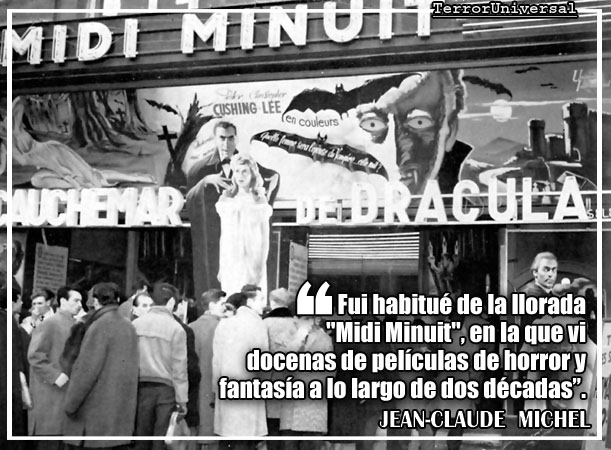
—¿Cómo te especializaste en horror británico y en la obra y filmografía de Tod Slaughter?
—Realmente no soy especialista en horror británico, a pesar que es uno de mis favoritos. Pero
acerca de Tod Slaughter, ciertamente lo soy y es una larga historia. Como te contaba, mantuve
una extensa correspondencia con Forrest J Ackerman, y a lo largo de los años, hicimos
montones de intercambios. una vez, en 1964, me envió un lote de lobbycards de un doble programa, Strangler's Morgue y Horror Maniacs, ambas protagonizadas por alguien que a
pesar de resultarme desconocido por completo, era rotulado como el "hombre del horror
europeo". A mediados de la década del sesenta, la única manera de recabar información o lo
que fuera, era enviar cartas a diferentes personas ya que libros de referencia como los de
Walt Lee o Donald C. Willis simplemente no existían. Y créeme, enviaba un montón de cartas
ya que muchos destinatarios nunca respondían. Pero estaba muy interesado en esta especie
de desafío: tenía 24 años y había sido fan del horror, ciencia ficción y fantasía durante la mitad
de mi vida, tenía una colección de Famous Monsters of Filmland y sus varias imitaciones, y a
pesar de eso, el nombre de Tod Slaughter era totalmente nuevo y desconocido para mi. Se lo
catalogaba como "europeo" pero... ¿de qué nación? Incluso, los dos títulos mencionados, no
eran los títulos originales, sino que fueron títulos de estreno con que la distribuidora Hoffberg
los promocionó en los estados unidos. ¡Y no olvides que en aquella época previa al VHS,
ninguna de esas películas estaba disponible! en cualquier caso, ninguna de esas dos habían
sido estrenada jamás en francia. Luego descubrí algunas pistas en la revista Castle of
Frankenstein. Tan solo unas líneas, y las fechas
mencionadas eran erróneas... pero era algo. Así que
comencé a armar una filmografía, agregando títulos,
borrando otros (por ejemplo, la nunca filmada The
Vengeance of Magnus Vann). En 1974 publiqué un primer
artículo sobre Tod en L'Ecran Fantastique... ¡a pesar que
no había visto ninguna de sus películas! Mi filmografía
estaba incompleta, pero fue lo primero publicado en
Francia acerca de Tod Slaughter.
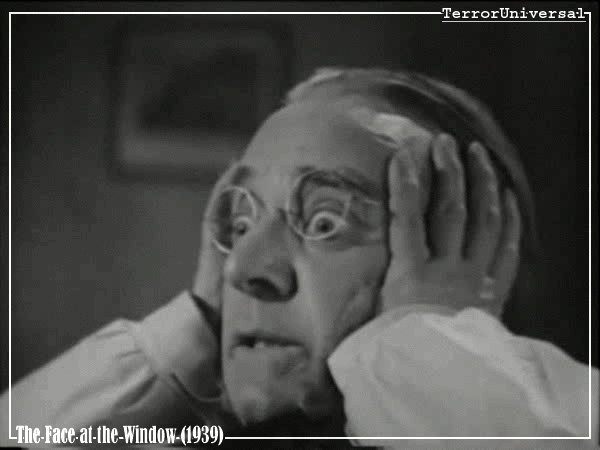
La mía con Tod Slaughter es una larga historia...
También comencé a coleccionar material de esas
películas. Un gran golpe de suerte fue, dado que
aparentemente nadie buscaba material de ese actor, pude
conseguir muchas cosas por centavos. El British Film
Institute, por ejemplo, no tenía ni siquiera un fotograma
de Sweeney Todd (1936), y encontré 25 stills originales de
su estreno en Estados Unidos, así como cuatro lobbies, el
pressbook y un afiche... hoy en día, semejante material
sería completamente imposible, o casi, y de estar
disponible, los altos precios impuestos por el auge de los
coleccionistas, harían sus precios ridículos. Esta búsqueda
de material e información siguió por décadas, ya que ante
cada misterio resuelto, surgía otro en reemplazo...
Escribí un segundo artículo, bastante más
completo, para la revista británica
Headpress, que luego rearmé en alemán
para Splatting Image en 1993. Entre esos
años pude conseguir algunas películas de Tod
que emitían en el Channel Four deGran
Bretaña. Pero labúsquedaera interminable,
porque los créditos de las películas estaban
incompletos e incluso una, no tenía ningún
director acreditado. Los créditos del pressbook podían diferir de los que figuraban
en la película, algunas stillsde publicidad
mencionaban actores que no se veían en la película, y cosas por el estilo. Escribí literalmente cientos de cartas a
organizaciones británicas, sociedades o
gremios, en pos de identificar al compositor
de la banda sonora (raramente acreditados
en aquella época), etc. ¡Hasta llegué a
escribir al Museo Militar Británico en pos
de una featurette (mediometraje) titulado Soldiers Without Uniform! Así que, luego
de 53 años de investigación y búsqueda,
algunos títulos aún me siguen escapando,
pero en compensación, ¡he encontrado
otros que ni siquiera figuraban en ningún lado!
—A diferencia de la mayoría de los autores norteamericanos, que solamente conocen en
profundidad lo de Hollywood, tú también conoces un montón acerca de horror en otras cinematografías. ¿Cómo nació este interés en los Otros horrores y cómo lo alimentaste?
—Bien, cuando leo algunos libros pretenciosamente titulados Histoire du Cinéma Mondial,me enojo porque solo incluyen a los mismos países de siempre. Yo pretendo que se incluya
no solo la historia del cine norteamericano o francés, sino también la de cientos de otros
filmes hechos por otras cinematografías. Antes de la era del video, me babeaba leyendo acerca
de la serie malaya de Pontianak, mencionada por Walt Lee y Donald C. Willis en sus
respectivos libros de referencia, o de la versión china de 1937 inspirada en Le fantôme de
l'Opéra de Gaston Leroux... Así que no solamente con el video, pero cuando también cobró
auge internet, comencé a comprar películas de Malasia, Japón, Indonesia, las Filipinas,
Escandinavia, Tailandia, Corea, Hong Kong, etc. Algunas eran mediocres copias en VCD pero
al menos podía ver aquellos filmes. Por supuesto, también compré los clásicos, los filmes
mudos alemanes, los de la edad de oro de Universal, Hammer, etc. sin olvidar las películas
clase Z de Andy Milligan, Brad F. Grinter o Jerry Warren. También tengo una extensa colección
de cine argentino y mexicano.
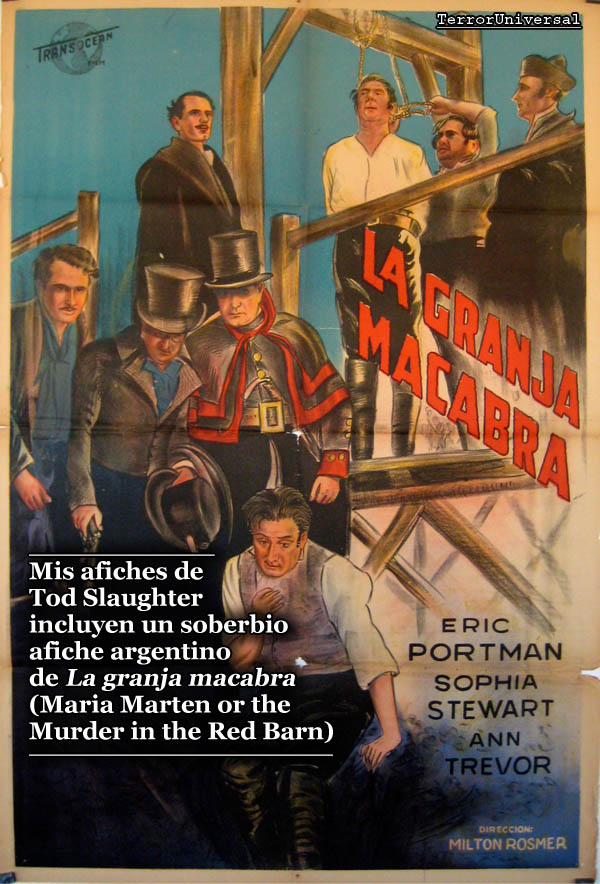
—Como casi cada estudioso, tú también tienes el afán del coleccionista. ¿Cuál es la pieza
más rara y valiosa de toda tu videoteca y biblioteca?
—En mi opinión, mis piezas preferidas son todas las películas de Tod Slaughter, a pesar que ya
no sea una rareza absoluta dado que varias compañías las han distribuido en DVD e incluso
la TV francesa las ha emitido algunos años atrás... a estas añadiría las películas asiáticas, como
la saga de Pontianak (1957), así como las versiones alternativas rodadas en simultáneo, como
el Dracula hispano de Universal (1931), las dos versiones de Barbe-Bleue y Blaubart (1951)
de Christian-Jaque, la francesa con Pierre Brasseur, la alemana con Hans Albers. Ahora si
hablamos de rarezas bien raras, tengo una copia doblada al francés del film de terror de RKO The Monkey's Paw (Arg: El amuleto fatal / Esp: El amuleto - La garra del mono-1933), DVD-R
transferido desde una copia de 16mm de un coleccionista privado. Mis afiches de Tod
Slaughter incluyen el manifesto italiano de Lo strangolatore (Crimes at the Dark House-1940)
y un soberbio afiche argentino de La granja macabra (Maria Marten or the Murder in the Red Barn-1935). Y el afiche norteamericano de Sweeney Todd (1936) y The Face at the Window
(Arg [v]: Un rostro en la ventana-1939). Sin embargo, mi tesoro más preciado es una
fenomenal still de Boris Karloff en Bride of Frankenstein, con una maravillosa dedicatoria
personal que redactó ¡en francés! en 1966. También tengo una de Peter Cushing, a quien
conocí en 1972 y 1973, durante el Paris Festival que mencioné antes...
English version
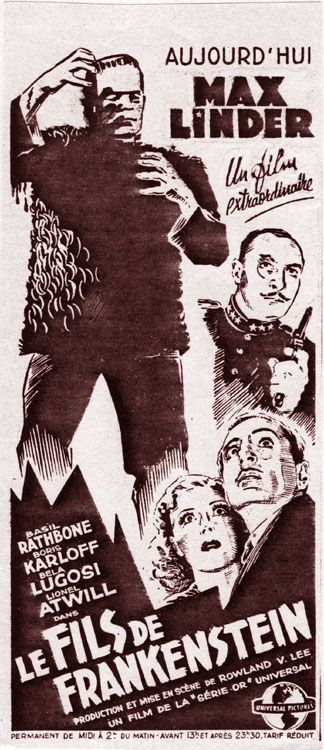 - What was your first contact with classic horror movies? How did your romance with the genre begin? - What was your first contact with classic horror movies? How did your romance with the genre begin?
It happened in 1952, when I was 12. As you can imagine, it was a quite different time. At this period France only had one television channel, in black and white of course, and the only movies broadcast were generally westerns. Anyway, we didn't have any TV set in the family, so my only "knowledge" of the movies was acquired in theaters. One evening, in the Latin Quarter of Paris, I was attracted by a giant poster announcing Deux nigauds contre Frankenstein - as you can guess it was the Charles T. Barton movie Bud Abbott Lou Costello Meet Frankenstein. I had never heard of Abbott & Costello, or Frankenstein. But I was sure it was a movie for me... don't ask me why. Maybe because my grand-mother (on my mother's side) often talked about Celtic legends when we visited her in Brittany...
But there was a problem: as incredible as it can sound today, A & C Meet Frankenstein was forbidden to people under 16 in France - and I was 12. I don't know what this friend of my mother, who was with me this evening, told to the cashier but he accepted to let me entering the theater... And when I saw the first transformation of Lawrence Talbot in the Wolf Man, maybe five minutes after the credits, I was terrified but extatic!
In fact I was so impressed by the movie, and particularly the Frankenstein Monster (Glenn Strange) that I was unable to sleep quietly the following nights, despite of the presence of a big dog in the appartment... Then I began to search informations about Frankenstein, the novel and the movies. It was rather difficult, as French magazines rarely talked about these films in the 1950s.
By chance, some months later, in another theater located in Pigalle, they played The Ghost of Frankenstein and I persuaded my mother to watch the film! it was my first "serious" genre movie, I started to notice the names of the actors, directors...
During the Occupation, of course, any American movie was forbidden in France, and titles like Gone With the Wind, to give you an example, were only released after the war. It was the case for Frankenstein Meets the Wolf Man, that was shown in Paris for the first time in 1956. At this time I was already searching this kind of movies in Paris, and became a regular spectator at the lamented "Midi Minuit", where I saw dozens of horror and fantasy movies through two decades!
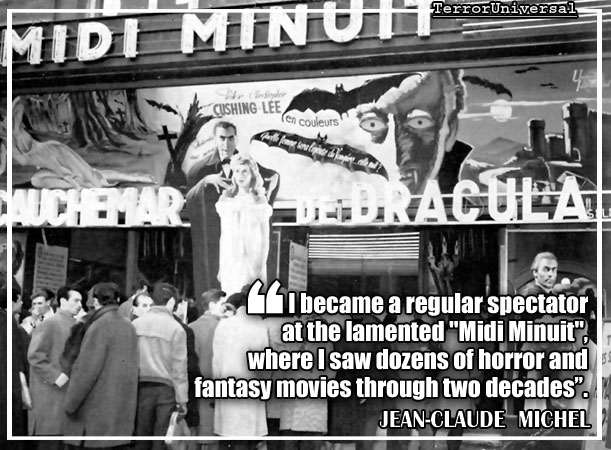
- Tell our readers about your publications (books or magazines)...
Most of these movies were ignored, or mocked, by "serious" critics (generally the same ones who treated them as masterpieces 15 years later!). In 1957 I wrote a first article called "La Dynastie des Frankenstein" and sent it to a professional magazine called Satellite - Les Cahiers de la Science-Fiction. It was accepted. I wasn't paid, but it was a first step!
I don't remember exactly why but I didn't recidived immediately. I just saw a lot of movies, going from the silents (generally at the Cinémathèque, but also, sometimes, in "normal" theaters) to the then-recent Hammer gothics such as The Curse of Frankenstein, Horror of Dracula, etc.
In 1961 a British friend sent me an issue of Famous Monsters of Filmand. I was thrilled and put an ad in a French mag called Fiction, asking for other issues. Incredibly enough, Forrest J Ackerman saw this ad and sent me the earlier issues, and a lot of stills and lobby cards. A lenghty correspondence followed and I became the first "Foreign Correspondent" credited as such in the magazine...
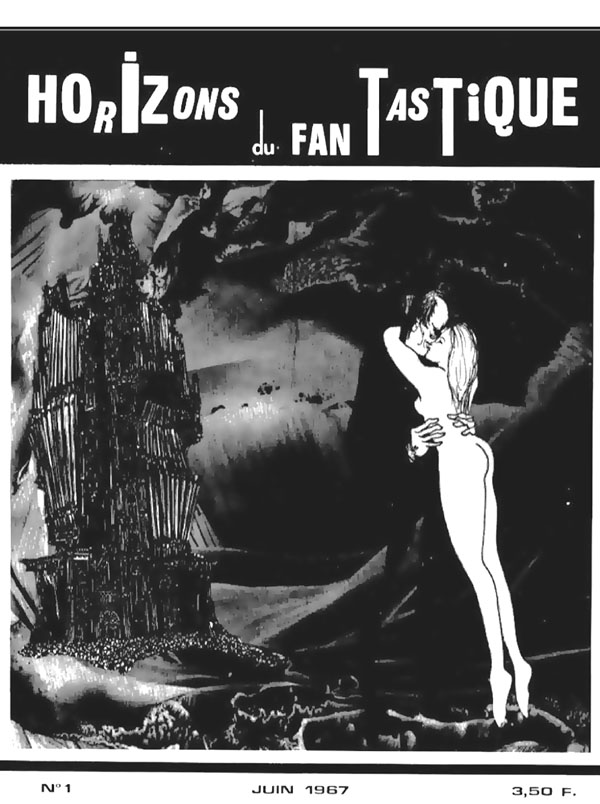
The following year I met Jean Boullet, who was a painter, a writer and a film critic, and Philippe Druillet, who was just 20 and wasn't still the famous illustrator and painter he became later. We spent two months in London and saw an armada of old fantasy and horror films that weren't distributed in France (or many years ago and never re-released). So I was considering to make a fanzine (making a magazine was much too costing for us at this time).
But this happened only some years later, in 1965. With a friend named Jean-Pierre Bouyxou (who became a writer, a journalist, and a movie actor and director - he was in Jesus Franco and Jean Rollin films) we made a little thing called Mercury-Bis. The first issue was entirely devoted to Boris Karloff.
In 1966 I got a letter from a guy named Alain Schlockoff, who wanted to continue the fanzine (Jean-Pierre being no longer interested), so we published a second issue - the last one.
But almost immediately we started (Alain and me) another one called Horizons du Fantastique. It was successful enough and became a professional magazine. I wrote several articles on fantasy films. Then Alain decided to leave the magazine to one of his associates, and asked me if I had ideas for a new one!
So in 1969, after some other one-shot fanzines like Metaluna, we started L'Ecran Fantastique. Like Horizons du Fantastique some years earlier, it started as a fanzine, roneotyped. Then came a second period, it was printed as a semi-professional magazine, and I published a giant "Vampire Filmography" in two issues. And finally we started a third period, this time as a totally professional mag - still published today after 48 years (but I stopped my collaboration in the early 1980s.
From 1972 to the mid-1980 we also organized annually the "Festival of Paris of Fantasy and Science Fiction Films", with Guests of Honor like Peter Cushing, Christopher Lee, Terence Fisher, Peter Sasdy, Paul Naschy, José Mojica Marins, Lucio Fulci, Vincent Price, etc. It was a great success as 35 to 40 movies were presented each year, most of them being current productions still unreleased, and others in a "retrospective" section.
In the meantime I was writing for other magazines such as Ciné-Zine-Zone, Cinefantastique (the fanzine, before it became a professional mag), Headpress (UK), Splatting Image (Germany), Heretic, Fantasy Film Memory, Nostalgia, etc. I also made some TV appearances, in a documentary on Fantômas (the books and the movies), and others on Bela Lugosi, King Kong, the films poster collectors, etc.
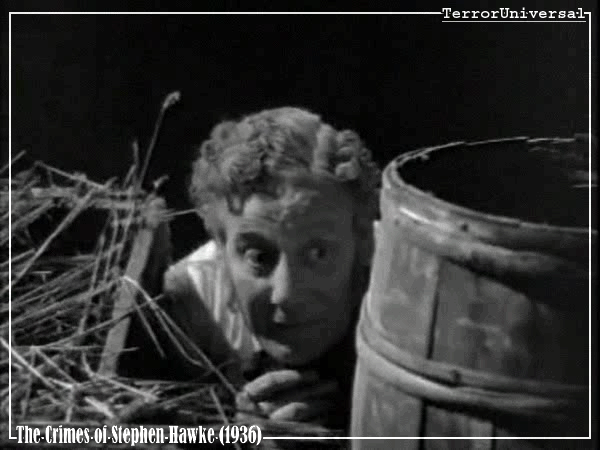
About Tod Slaughter, certainly I am a specialist, and it's a long story.
- How did you specialize in British horror and the work and filmography of Tod Slaughter?
I'm not really specialized in British horrors although they are among my favorites. But about Tod Slaughter, certainly I am, and it's a long story.
As I told you, I had a lengthy correspondence with Forrest J Ackerman, and we made a lot of swaps through the years. Then, in 1964, he sent me in a parcel some lobby cards of a double-bill called Strangler's Morgue and Horror Maniacs, both starring a man who was totally unknown to me, and labelled as "Europe's Horror Man". In the mid-1960s, the only way to obtain informations on anything was to send letters to different persons as reference books such as the one written by Walt Lee or Donald C. Willis simply didn't exist. A LOT of letters, believe me, as some persons simply never answered. But I was interested by this kind of challenge: I was 24 and was a fan of fantasy/horror/SF movies for half of my existence, I had a collection of Famous Monsters of Filmland and its various imitators, and in spite of this, the name of Tod Slaughter was totally new for me. He was labelled as "European" but from which country? Moreover, the two titles I mentioned were not the original ones, they were created by the US distributor, Hoffberg...
And don't forget that in these pre-video days, none of these movies was available!
None of them in any case was ever released in France. Then I discovered some little notices in Castle of Frankenstein. Just some lines, and the dates mentioned were false most of the time... But it was a beginning. So I started to dress a filmgraphy, adding titles, erasing others (the never made The Vengeance of Magnus Vann for instance). In 1974 I published a first article on Tod in L'Ecran Fantastique... although I had never seen one of his movies! and the filmgraphy was incomplete, but it was the first one ever published, in France in any case!
I also started to collect materials from these films. My great luck was that - as nobody, apparently, was asking anything with this actor - I acquired most of them for peanuts. The British Film Institute had not a single still from Sweeney Todd (1936) for instance - I found 25 originals from the US release, as well as the four lobbies, the pressbook and the one-sheet... Such materials are totally impossible to find nowadays, or almost - and if so, they are so high-priced it becomes ridiculous.
This search of materials and informations runned for decades, as each solved mystery was immediately replaced by another problem...
I wrote a second article, far more complete, in the British magazine Headpress, then a revamped German version for Splatting Image in 1993. In the meantime, I was able to get some of Tod's movies that were shown on Channel Four in UK. But it was an endless search, as even the films credits were incomplete, and one of them has no director credited, etc. The credits from the pressbook can be different of the ones on the print, some front-of-house stills mentions an actor who isn't in the movien, and so on.
I wrote, literally, hundreds of letters to British organizations, guils, in order to identify the author of the music (rarely credited in these times), etc. I even wrote to the British Army Museum in the hope to find a trace of a featurette called Soldiers Without Uniform!
Well, even now after more than 53 years of extensive research, some titles still escape me, even if I found others that weren't listed anywhere!
- Unlike most American authors, who only know deeply about Hollywood, you also know a lot about horror in other cinematographies. How did this interest in all these "Other" horrors begin and how did you feed it?
Well, I think I became angered in reading some books pretentiously called "Histoire du Cinéma Mondial" that only included the usual same countries! I wasn't searching for a story of American or French cinema, but about the myriads of films made elsewhere... And before the video era, I salivated in reading titles like the Malaysian Pontianak series mentioned by Walt Lee and Donald C. Willis in their respective reference books, or the 1937 Chinese movie inspired by Gaston Leroux's Le fantôme de l'Opéra... So, when not only the video, but Internet became available, I started to order movies from Malaysia, Japan, Indonesia, the Philippines, Scandinavia, Thailand, Korea, Hong Kong, etc. Some were mediocre transfers on VCDs but at least I could see the films! of course I also ordered the classics, the German silents, the Universal Golden era, the Hammer, etc. but didn't forget the Z-flicks of Andy Milligan, Brad F. Grinter or Jerry Warren! I also have an extensive collection of Argentinian and Mexican movies, of course.
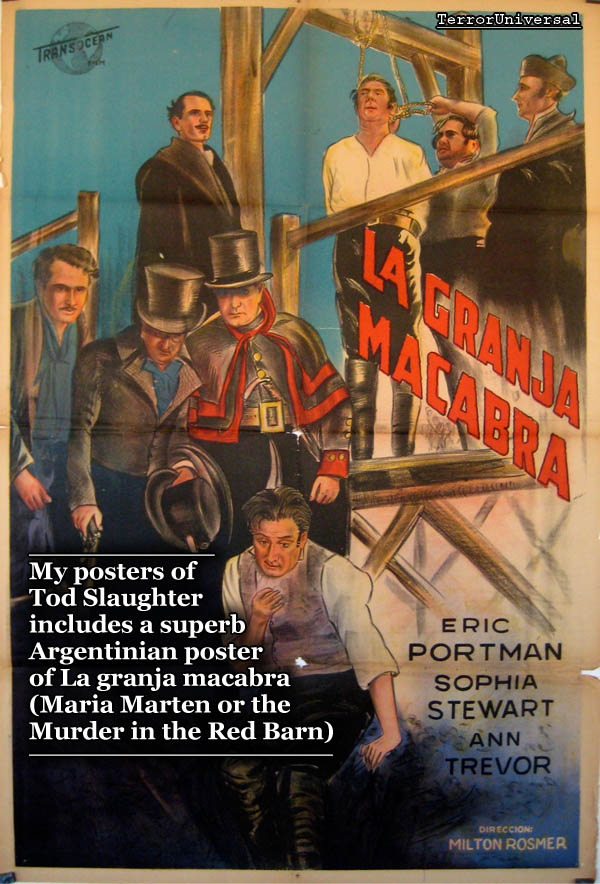
- Like almost every scholar, you also have the collector's eagerness. What are the most rare & valuable pieces of your library and video library?
For me, all the Tod Slaughter titles even if some are no longer rare, having been released on DVD by several companies (three of them were even shown on French television in recent years)... I would add these Asian movies like the Pontianaks, and also these movies made in several "alternate" versions simultaneously, like the Hispanic Dracula of Universal, the two versions of Barbe-Bleue / Blaubart made by Christian-Jaque, the French one with Pierre Brasseur, the German with Hans Albers. Now if we speak of very rare movies, I do have the French-dubbed version of RKO's The Monkey's Paw, a DVD-r made from a 16mm print from a private collector. My posters of Tod Slaughter includes the Italian "manifesto" of Lo strangolatore (Crimes at the Dark House) and a superb Argentinian poster of La granja macabra (Maria Marten or the Murder in the Red Barn). And the US one-sheets of Sweeney Todd and The Face at the Window. My most cherished treasure is certainly a superb still of Boris Karloff in Bride of Frankenstein, with a wonderful dedicace he made for me - and in French! - in 1966. I also have another of Peter Cushing, that I met in 1972 and 1973, during the Paris Festival I mentioned earlier...
| atrás
| recomendar esta página
| enviar comentarios
| arriba
| |



